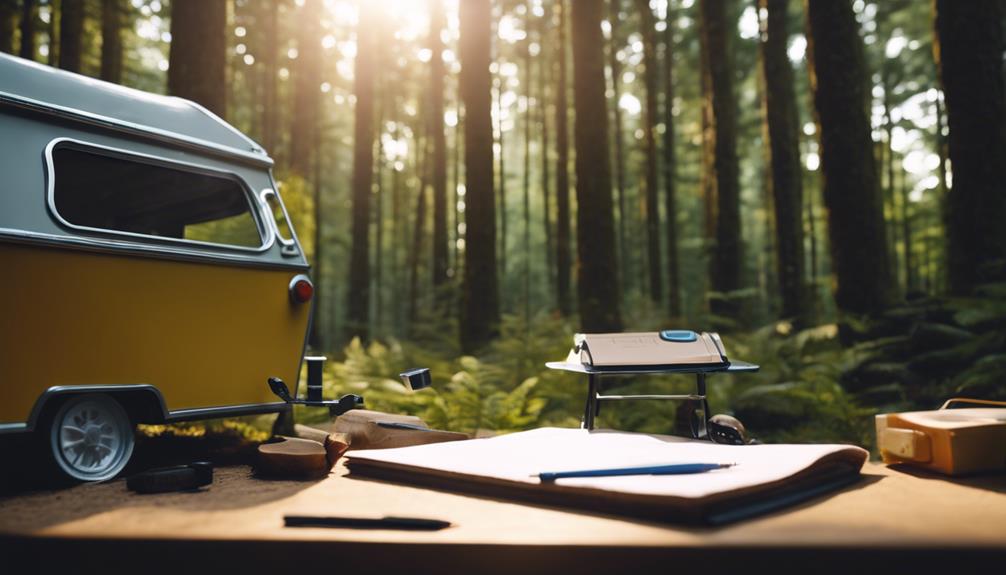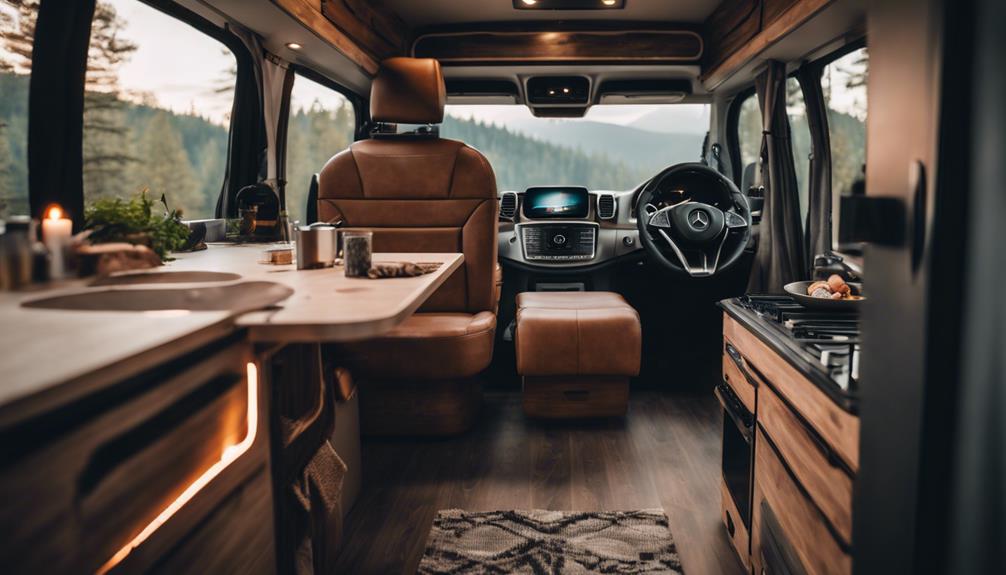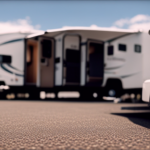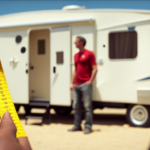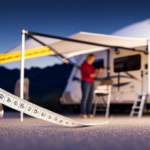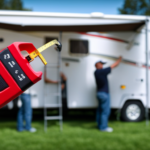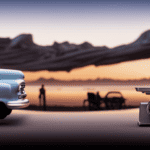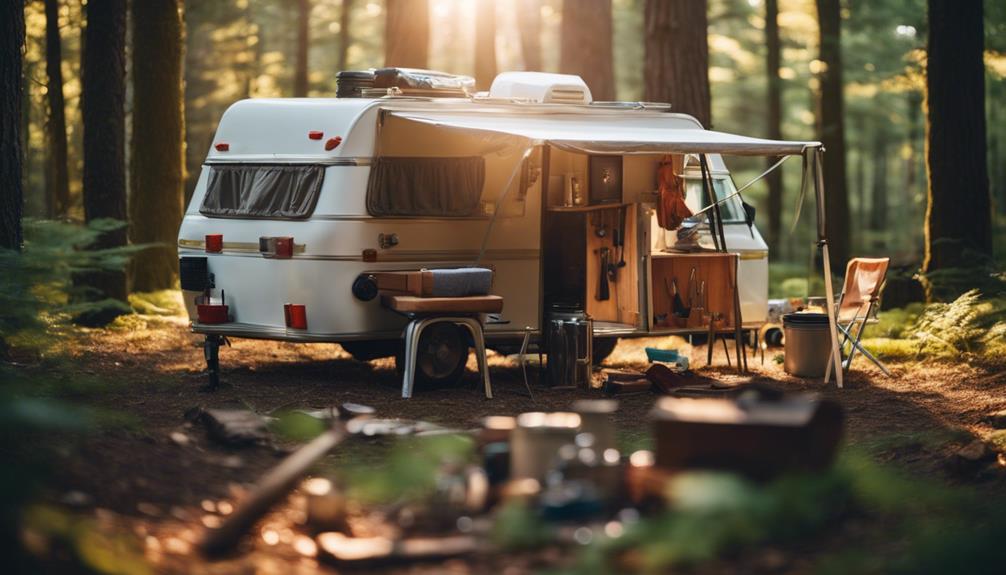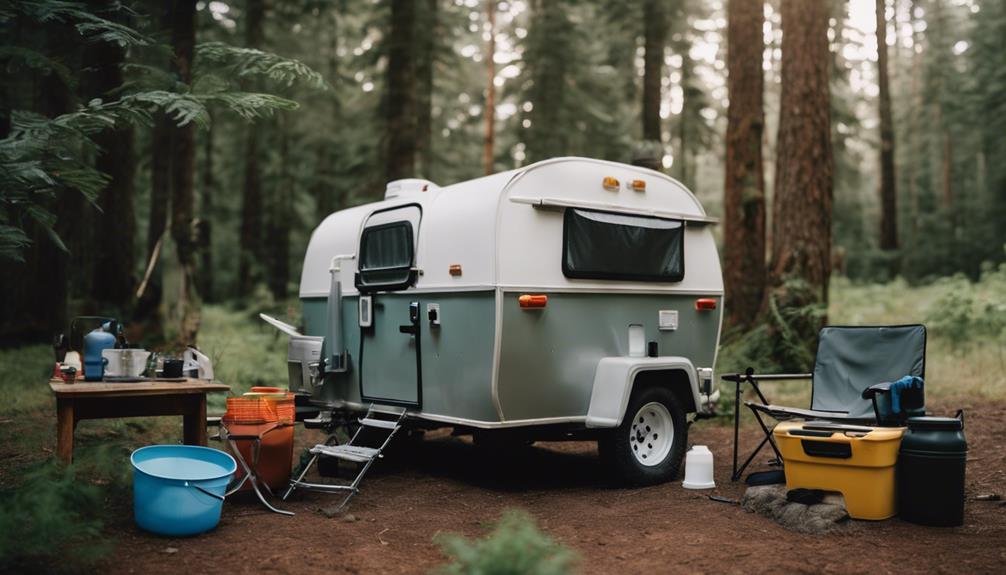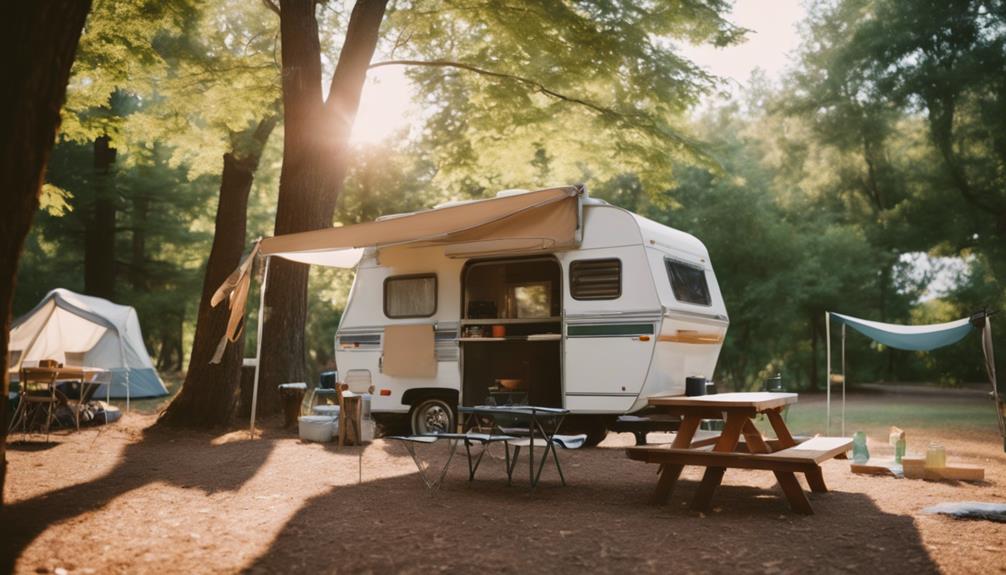To measure your pop-up camper for a cover, start by measuring the length from the back to the front, excluding the tongue. Next, get the height from the roofline down to the frame's bottom, ignoring any accessories. Then, measure the width at the widest point. Don't forget to account for any spare tires or roof racks that may stick out. Be cautious of common mistakes, like neglecting protruding parts, which can lead to a poor fit. If you follow these guidelines, you'll find the right cover that protects your camper effectively, and there's more to explore on ensuring a snug fit.
Key Takeaways
- Measure the camper length from the back to front, excluding the tongue length for accurate sizing.
- Determine height from the roofline to the frame bottom, omitting any accessories for a snug fit.
- Measure the width at the widest point, excluding extensions and ensure to include any protruding features.
- Account for any roof-mounted accessories and irregular shapes when taking measurements to avoid ill-fitting covers.
Importance of Accurate Measurements
Measuring your pop-up camper accurately is vital for guaranteeing a snug fit that protects against the elements. When you take the time to properly measure, you're not just getting numbers; you're laying the foundation for maximizing protection.
Accurate measurements guarantee that the cover fits snugly, covering the entire body of your camper. This snug fit is essential for preventing potential damage caused by wind and rain exposure.
If you end up with an ill-fitting cover, you risk gaps that can lead to moisture buildup, mold, and mildew, which can wreak havoc on your camper. By guaranteeing precise dimensions, you extend the lifespan of both your cover and your camper.
Properly measuring minimizes fabric stress and wear, allowing your cover to perform effectively over time. Investing a few extra minutes into accurate measurements can save you from the hassle of returns and replacements.
Ultimately, this attention to detail not only preserves your camper's overall condition but also protects its value. So, grab your measuring tape and get started; you'll be grateful you did!
Measuring Guidelines for Pop-Up Campers
To guarantee your pop-up camper is well-protected, follow these straightforward guidelines for taking accurate measurements. Start by measuring the length of your pop-up camper from the back to the front of the camper box when closed, including any attached storage boxes, but exclude the tongue length. Next, take the height measurement from the top of the roofline to the bottom of the frame, making sure you exclude any roof-mounted accessories like air conditioning units. For width, measure across the widest point of the camper while excluding any extensions like awnings or side mirrors.
Here's a quick reference table to help you:
| Measurement Type | How to Measure |
|---|---|
| Length | From back to front, excluding tongue length. |
| Height | Roofline to frame bottom, excluding accessories. |
| Width | Across the widest point, excluding extensions. |
| Additional Features | Account for spare tires or roof racks. |
| Measurement Units | Always use feet and inches for precision. |
Double-check all dimensions to make sure a perfect fit for your cover. Following these measuring guidelines will help you keep your pop-up camper safe and secure.
Common Measurement Mistakes to Avoid
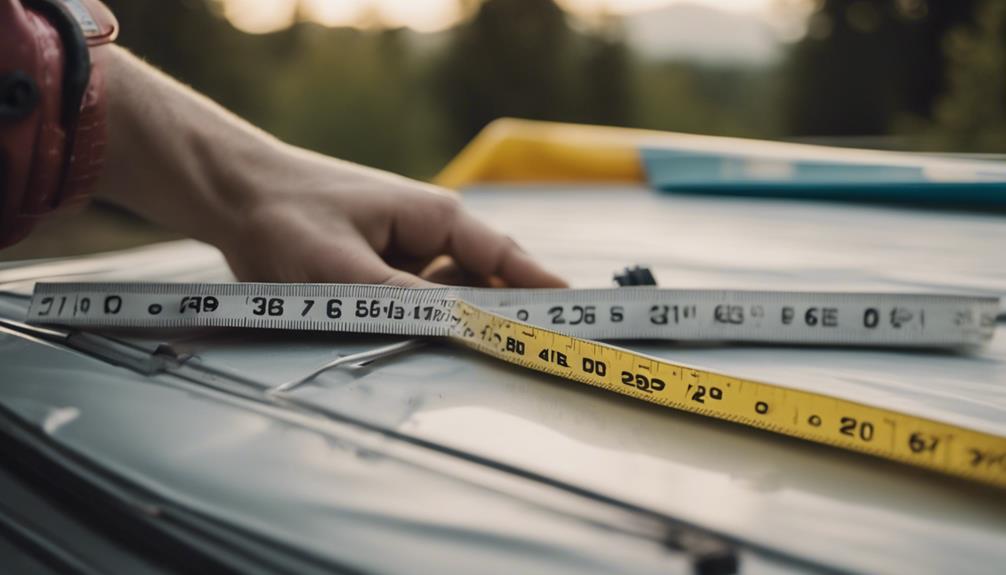
Accurate measurements are essential, but common mistakes can easily compromise the fit of your pop-up camper cover.
One major pitfall is failing to account for all protruding parts, such as storage boxes or spare tires, which can lead to inaccurate length measurements. Don't forget to measure the height of any roof-mounted accessories, like air conditioning units, as neglecting these can result in an ill-fitting cover that fails to protect your camper properly.
Another mistake is overlooking the need for extra coverage to accommodate irregular shapes or accessories. This oversight often results in coverage gaps, leaving your camper vulnerable to the elements. To avoid these issues, take your time during the measurement process; misplacing the tape measure or rushing can lead to inconsistencies.
Lastly, always refer to the manufacturer's guidelines for measurements. Ignoring these can cause significant discrepancies that might damage your camper due to an ill-fitting cover.
Recommended Covers for Pop-Up Campers
What are the best options for protecting your pop-up camper? When it comes to RV covers, two excellent choices stand out: the Adco SFS AquaShed and the Camco UltraGuard. Both covers are designed specifically for pop-up campers ranging from 14 to 16 feet, guaranteeing a snug fit that prevents movement during windy conditions.
Here's a quick comparison of these covers:
| Cover Name | Key Features |
|---|---|
| Adco SFS AquaShed | Heavy-duty 3-layer fabric, UV protection |
| Excellent rain and snow resistance | |
| Price: $139.13 (discounted) | |
| Camco UltraGuard | Heavy-duty polypropylene fabric |
| Superior durability and weather resistance | |
| Price: $184.17 (discounted from $259.65) |
Both covers offer maximum coverage while being tailored to accommodate various camper sizes and contours. By measuring accurately, you can ascertain your choice provides the necessary protection against the elements. With these options, you'll be well-equipped to keep your pop-up camper safe and secure during storage.
Additional Tips for Cover Selection
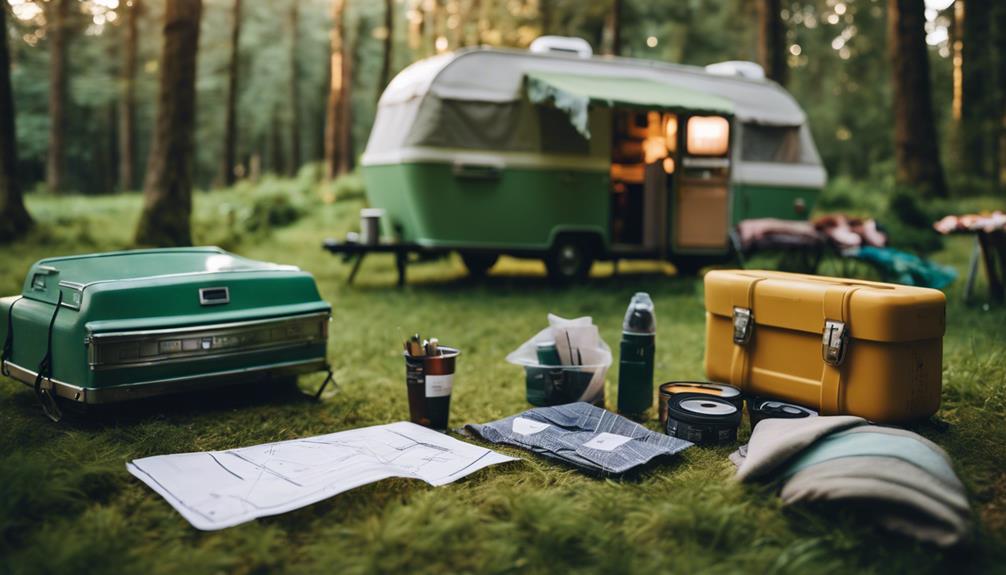
Selecting the right cover for your pop-up camper involves careful consideration of its dimensions and any unique features. To guarantee a superior fit, you need to measure the height, measure the length, and account for any storage boxes.
Here are some additional tips for cover selection:
- Measure from the top of the camper box to the bottom, excluding roof-mounted accessories like air conditioning units.
- Consider water-resistant materials that offer heavy-duty protection against rain, snow, and UV rays.
- Check if the cover has features to secure it in place, like elastic hems or straps, to prevent it from blowing off in windy conditions.
Frequently Asked Questions
How Are Pop-Up Campers Measured?
To measure pop-up campers, you'll need to check length, height, and width. Measure the camper when it's closed, including any attached features, and double-check your dimensions to verify accuracy and avoid mistakes.
How to Measure Travel Trailer Length for Cover?
To measure your travel trailer length for a cover, start at the furthest front point and end at the rear, excluding the hitch. Use a tape measure, ensuring it's straight for accuracy. Double-check your measurement.
Should RV Cover Be Tight or Loose?
You should aim for a snug fit with your RV cover. A tight cover prevents wind movement and water pooling, while still allowing breathability. Just don't make it too tight, as that can stress the fabric.
How Big Is a Pop-Up Camper When Closed?
On average, closed pop-up campers measure 8 to 18 feet in length. When closed, you'll typically find them 6 to 8 feet wide and 4 to 6 feet tall, depending on the model.
What Size Cover Should I Get for My Pop-Up Camper if I’m a Beginner?
When choosing a cover for your pop-up camper as a beginner, it’s important to get the right size to ensure proper protection. Consult a beginners guide to popup campers to determine the appropriate measurements for your specific model. A well-fitting cover will help extend the life of your camper.
Conclusion
By taking precise measurements of your pop-up camper, you can guarantee a perfect cover fit, just like finding the right key for a lock.
The right cover not only protects your investment but also enhances its longevity.
Remember to avoid common measurement mistakes and consider the recommended covers that suit your needs.
With these tips in mind, you'll be well-equipped to select a cover that keeps your camper safe and secure for many adventures ahead.

